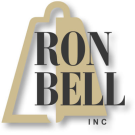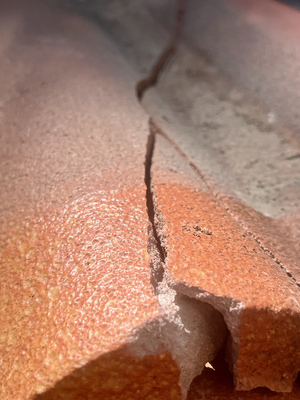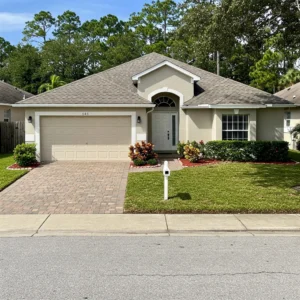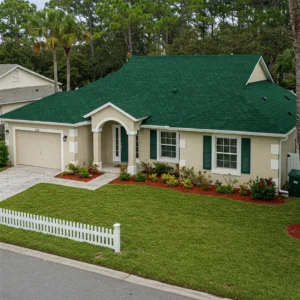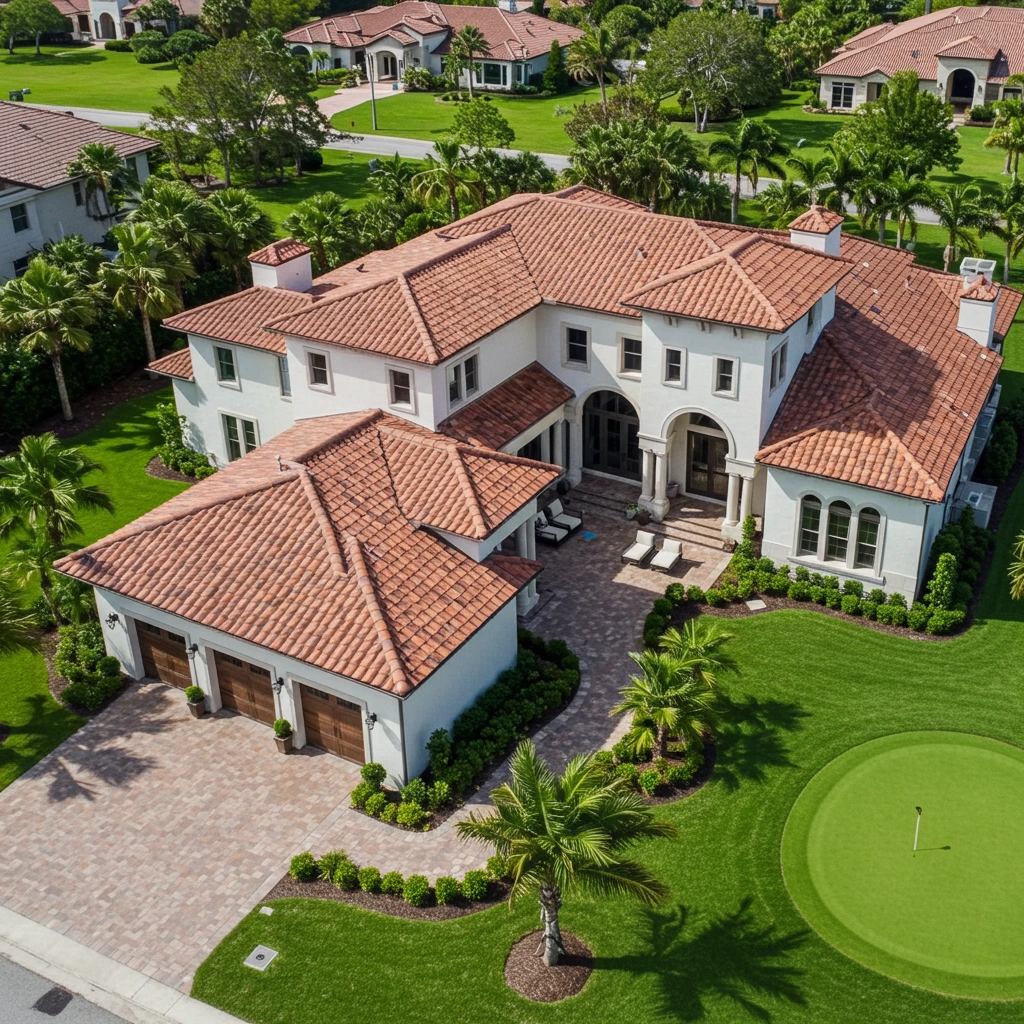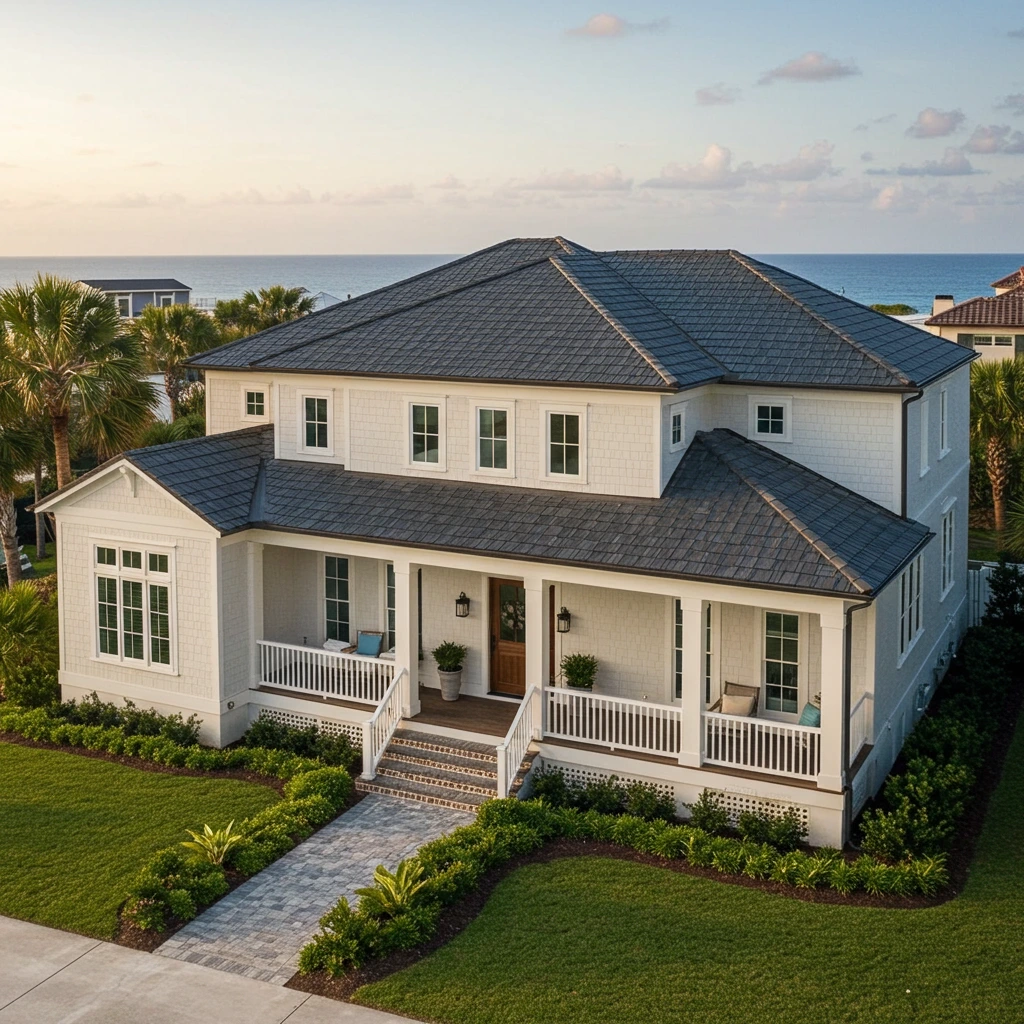5
(3)
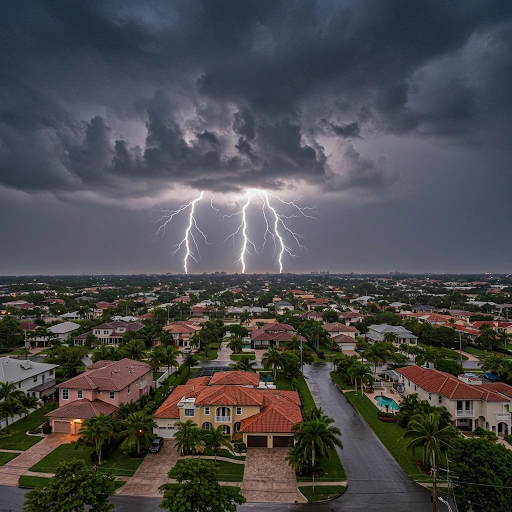
Storm Damaged Roof? Delray’s Guide to Action & Repair
Table of Contents
- The Fury of Florida Weather: How Storms Target Your Delray Beach Roof
- Immediate Steps After the Storm: Protecting Your Property & Yourself
- Spotting the Unseen: Signs Your Roof Has Suffered Storm Damage
- Navigating the Insurance Maze: Storm Damaged Roof Claims in Florida
- The Ron Bell Roofing Difference: Expert Repair in Delray Beach
- Beyond Repair: When is a Full Roof Replacement Necessary?
- Proactive Protection: Preparing Your South Florida Roof for Storm Season
- Key Takeaways
- Frequently Asked Questions
The Fury of Florida Weather: How Storms Target Your Delray Beach Roof
Living in Delray Beach means basking in sunshine for much of the year, but it also means preparing for the powerful forces of nature that can impact our homes and businesses. Understanding how different types of storms affect your roof is the first step in mitigating damage and ensuring a swift recovery. Our South Florida climate, with its intense heat, humidity, and seasonal storm activity, puts unique stresses on roofing systems. A storm damaged roof isn’t just an inconvenience; it can compromise the safety and integrity of your entire structure.Hurricane Havoc: Understanding Wind Forces and Uplift
Hurricanes are, undoubtedly, the most formidable weather challenge for South Florida roofs. The sheer power of hurricane-force winds can be devastating. These winds don’t just blow against your roof; they create complex pressure differentials. As wind flows over the roof, it can create a lifting effect, similar to how an airplane wing generates lift. This is known as wind uplift. For a roof in Delray Beach, particularly older ones or those not built to the latest codes, this uplift can peel off shingles, dislodge tiles, or even tear away sections of the roofing material and underlayment.The edges and corners of your roof are especially vulnerable. For example, during Hurricane Wilma in 2005, many homes in Palm Beach County experienced significant roof damage due to high winds, even if the eye of the storm didn’t pass directly overhead. This event highlighted the importance of robust roof-to-wall connections and properly secured roofing materials. The age of your roof also plays a critical role; older shingles become brittle and lose adhesion, making them prime candidates for issues when you search “how to identify wind damage on tile roofs Florida” or shingle roofs.Tropical Storms & Heavy Rain: The Silent Saboteurs
While hurricanes get the headlines, tropical storms and our regular heavy rainfall events present their own set of problems. These systems can dump inches of rain in a very short period, overwhelming gutters and drainage systems. If your roof has any pre-existing weaknesses, such as loose flashing around chimneys or vents, or cracked sealant, this torrential rain will find its way in. This is where “preventing roof leaks during Florida rainy season” becomes a crucial proactive measure. Unlike the dramatic tearing of shingles in a hurricane, water intrusion from heavy rain can be subtle at first, leading to slow leaks that saturate insulation, damage drywall, and create an environment ripe for mold growth. This type of storm damaged roof often manifests as water stains on your ceiling or walls, sometimes long after the storm has passed. The cumulative effect of frequent, heavy rain can weaken the roof deck and compromise the structural integrity over time if not addressed.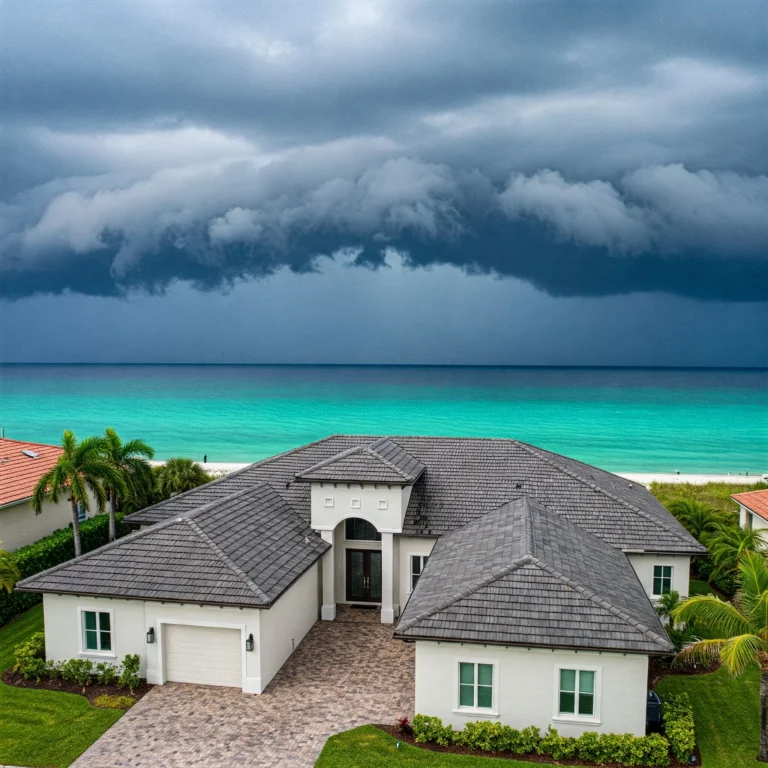
Roof Hail Damage; Hidden Impact (Even in South Florida)
Though less frequent in Delray Beach compared to other parts of the country, hail can and does occur in South Florida, often accompanying severe thunderstorms. Roof hail damage can be deceptive. Small hailstones might leave only minor dents or pockmarks on asphalt shingles, which may not seem like a major issue. However, Roof hail damage can impact roofs by bruising the shingle, dislodging the protective granules and exposing the underlying asphalt mat to UV radiation. This accelerates the aging process of the shingle and can lead to cracking and eventual failure. On metal roof hail damage cause significant cosmetic denting, and on tile roofs, larger hailstones can crack or shatter tiles. After a hailstorm, it’s important to have your roof hail damage inspected, as what appears to be minor storm damaged roof issues can lead to bigger problems later.Debris Damage: Projectiles in Paradise
Strong winds, whether from a hurricane or a severe thunderstorm, turn loose items into dangerous projectiles. Tree limbs, unsecured outdoor furniture, and even debris from neighboring properties can be hurled onto your roof with considerable force. This impact damage can puncture roofing materials, crack tiles, dent metal panels, and damage vents or skylights. The severity of debris damage often depends on the size and speed of the projectile. A large falling branch can cause immediate structural damage, while smaller debris might create less obvious punctures that still allow water to enter. After any significant wind event in Delray Beach, a visual inspection (from the ground, for safety) for any visible debris on your roof is a smart first step in assessing a potential storm damaged roof.
Unique Insight: Many property owners focus solely on the primary roofing material (shingles, tiles). However, storms often exploit the weakest points first – which are frequently the flashings around chimneys, vents, skylights, and valleys. These areas are crucial for waterproofing, and even minor damage here can lead to significant leaks. Ron Bell Roofing always pays meticulous attention to these critical transition points during inspections and repairs for any storm damaged roof.
Immediate Steps After the Storm: Protecting Your Property & Yourself
The storm has passed, and Delray Beach is beginning to assess the aftermath. Your first instinct might be to rush out and check your roof, but it’s crucial to proceed with caution and a clear plan. How you respond in these initial hours and days can significantly impact your safety, the extent of further damage to your property, and the success of any future insurance claim for your storm damaged roof. Taking the right steps can save you considerable stress and expense down the line. Remember, a compromised roof can be a hazardous environment.Safety First: Assessing Risks Before Action
- Look for downed power lines: Storms can bring down electrical lines. If you see any near your property, stay far away and report them to Florida Power & Light (FPL) immediately. Never touch anything in contact with a downed line.
- Be aware of structural instability: If your home or building has suffered major damage, there could be a risk of collapse. If you have any doubts about the structural integrity, do not enter. Wait for professionals to assess the situation.
- Use caution if going on the roof (or better yet, don’t): Walking on a storm damaged roof is incredibly dangerous. It can be slippery from rain or loose debris, and damaged areas might not support your weight. It’s always best to perform an initial inspection from the ground using binoculars. If you absolutely must access the roof for an emergency tarping, for example, ensure you use proper safety equipment, have someone with you, and are aware of the risks. Better yet, call a professional roofer like Ron Bell Roofing for “emergency roof tarping Delray Beach after hurricane.”
Document Everything: Your First Line of Defense for Insurance
Thorough documentation is absolutely critical when dealing with a storm damaged roof and filing an roof insurance claim. Before any cleanup or temporary repairs begin (unless it’s an immediate emergency to prevent further catastrophic damage), document the damage extensively.- Take photos and videos: Capture wide shots of the entire roof and close-ups of all damaged areas. Photograph any debris that hit your roof, missing or lifted shingles/tiles, dents in vents or flashing, and any interior damage like water stains on ceilings or walls. Date-stamped photos are even better.
- Make detailed notes: Write down your observations, including the date and time of the storm, the types of damage you see, and the location of the damage. Note any specific conditions, like strong wind gusts or hail.
- Keep receipts: If you make any emergency temporary repairs (like purchasing a tarp or plywood), keep all receipts. These may be reimbursable under your insurance policy.
Temporary Fixes: When and How to Mitigate Further Damage (e.g., Tarping)
If your roof is actively leaking or has significant openings, you’ll need to take steps to prevent further water damage to your home’s interior and structure. This is often referred to as “loss mitigation.”- Tarping: If there are holes or large areas of missing shingles, covering the damaged section with a securely fastened waterproof tarp can be an effective temporary measure. Ensure the tarp extends well beyond the damaged area and is anchored properly (often with wooden strips and nails/screws – but be mindful not to cause more damage than the storm did). Again, safety is paramount; if you’re not comfortable or equipped to do this safely, call a professional. Many Delray Beach residents rely on Ron Bell Roofing for prompt services.
- Interior Protection: Move valuable items away from any areas where water is leaking. Use buckets or containers to catch dripping water. If water is pooling on a ceiling, and you can do so safely, a small puncture in the drywall can allow the water to drain in a controlled manner, preventing a larger section of the ceiling from collapsing.
Contacting Your Insurance: Starting the Claim Process
Once you’ve ensured your safety and documented the damage, notify your insurance company as soon as reasonably possible.- Review your policy: If you have it handy, quickly review your homeowner’s or commercial property insurance policy to understand your coverage for storm damage, your deductible amount, and any specific requirements for filing a claim.
- Call your agent or the claims hotline: Provide them with the initial information about the storm damaged roof and the date of the incident. They will assign a claim number and explain the next steps, which usually involve an inspection by an adjuster.
- Be prepared to provide documentation: Have your photos, videos, and notes ready to share with your insurer.
Unique Insight: While documenting, don’t just focus on the roof itself. Take photos of any fallen trees or large debris in your yard that could indicate the storm’s severity – this can provide context to the adjuster about the conditions your property endured. Also, if neighbors have similar damage to their storm damaged roofs, a quick note of that can sometimes be relevant.
Spotting the Unseen: Signs Your Roof Has Suffered Storm Damage
After a significant Delray Beach storm, some types of roof damage are glaringly obvious. A gaping hole, a pile of shingles in your yard, or water pouring into your living room are hard to miss. However, much of the damage a storm can inflict on your roof is far more subtle and can easily go unnoticed by the untrained eye. This hidden damage, if left unaddressed, can lead to serious long-term problems, including persistent leaks, mold growth, reduced energy efficiency, and even structural decay. That’s why a thorough inspection, preferably by a seasoned professional like Ron Bell Roofing, is crucial after any severe weather event impacts your storm damaged roof.Obvious Red Flags: Missing Shingles, Dented Vents, and Visible Leaks
Let’s start with the more apparent signs that your roof needs immediate attention:- Missing or Broken Shingles/Tiles: This is one of the most common and visible forms of a storm damaged roof. Look for bare patches on your roof or shingles/tiles scattered in your yard or gutters. For tile roofs, cracked or shattered tiles are a clear indicator.
- Dented Gutters, Vents, or Flashing: Metal components on your roof are susceptible to impacts from hail or flying debris. Dents, creases, or dislodged sections of gutters, downspouts, roof vents (plumbing vents, exhaust caps), or flashing (the metal strips around chimneys, skylights, and valleys) indicate significant force.
- Visible Leaks or Water Stains: If you see water actively dripping from your ceiling during or after a storm, you have a clear breach. Even if the dripping stops, look for new or expanded water stains on ceilings or walls. These are tell-tale signs of a compromised storm damaged roof.
- Sagging Roof Deck: From the ground, look for any areas of the roof that appear to be sagging or drooping. This could indicate a more severe structural issue, potentially from waterlogged or broken roof decking.
Subtle Clues: Granule Loss, Bruised Shingles, and Hidden Water Intrusion
This is where damage often hides, eluding a quick glance:- Excessive Granule Loss: For asphalt shingles, the sandpaper-like granules protect the shingle from UV rays and weathering. A severe storm can wash off a significant amount of these granules. Look for an accumulation of granules in your gutters or at the base of your downspouts. While some granule loss is normal over a roof’s lifespan, a sudden increase after a storm is a concern for a storm damaged roof.
- Bruised or Hail-Damaged Shingles: Hail impacts may not always puncture a shingle but can create “bruises” – soft spots or indentations that compromise the shingle’s integrity. These are often difficult to see from the ground and require a close-up inspection. This is a key aspect when we discuss “how to identify wind damage on tile roofs Florida” or shingle roofs, as bruising weakens the material.
- Lifted or Curled Shingles: Wind can get under the edges of shingles and loosen the sealant, causing them to lift or curl. While they might not be completely torn off, these lifted shingles create entry points for wind-driven rain.
- Hidden Water Intrusion: Water can seep in through tiny cracks or compromised seals around flashing, vents, or nail penetrations. This moisture might not immediately show up as a ceiling stain but can be slowly damaging your roof deck, insulation, and attic space. This is why “signs of hidden water damage in attic after storm” is a critical check.
Interior Warnings: Ceiling Stains, Mold, and Unexplained Energy Bill Spikes
Sometimes, the first signs of a storm damaged roof appear inside your Delray Beach property:- New or Worsening Ceiling/Wall Stains: Discoloration, often yellowish or brownish, indicates water has been present.
- Peeling Paint or Wallpaper: Moisture seeping into walls can cause paint to bubble or peel.
- Musty Odors or Visible Mold: If you notice a persistent damp, musty smell, particularly in upper rooms or closets, or see visible mold growth, it’s a strong indicator of a hidden leak from a storm damaged roof.
- Unexplained Increase in Energy Bills: If your roof’s insulation gets wet from leaks, it loses its R-value (insulating effectiveness). Your HVAC system then has to work harder to heat or cool your home, leading to higher energy bills. This is a subtle but significant consequence of an unaddressed storm damaged roof.
Why a Professional Roof Inspection is Crucial in Delray Beach
While you can spot some of these signs yourself, a professional roofing contractor like Ron Bell Roofing has the training, experience, and equipment to conduct a comprehensive “Delray Beach roof inspection for storm damage.” We know what to look for, including the subtle signs that homeowners might miss. We can safely access the roof, identify the full extent of the damage, and provide an accurate assessment of whether repairs or a replacement is necessary for your storm damaged roof. Critically, a professional inspection provides the detailed documentation you’ll need for your insurance claim. Don’t leave the health of your roof and the protection of your property to chance after a storm.
Unique Insight: Beyond visible damage, professionals check for “nail pops” or “shiners.” These are nails that have backed out slightly due to wind uplift or thermal expansion/contraction exacerbated by storm stress. While small, these raised nail heads can break the seal of the shingle above them or even create a tiny puncture, becoming a direct pathway for water. Identifying and sealing these is a small detail that prevents big problems with a storm damaged roof.
Navigating the Insurance Maze: Storm Damaged Roof Claims in Florida
Dealing with a storm damaged roof is stressful enough; adding the complexities of an insurance claim can feel overwhelming for many Delray Beach property owners. Florida has specific regulations and common practices when it comes to roof damage claims, and understanding the process can help you secure a fair settlement and get your roof repaired or replaced properly. Working with an experienced local roofer, like Ron Bell Roofing, who understands these nuances can be a significant advantage. Knowing “what does insurance cover for roof storm damage” is the first step.Understanding Your Policy: What’s Typically Covered?
Your homeowner’s or commercial property insurance policy is a contract that outlines what types of damage (perils) are covered and to what extent. For storm damaged roofs, most standard policies provide coverage for damage caused by wind, hail, and falling debris. However, the specifics can vary:- Actual Cash Value (ACV) vs. Replacement Cost Value (RCV): This is a crucial distinction.
- ACV policies pay for the current value of your damaged roof, factoring in depreciation due to age and wear. This means you’ll likely have significant out-of-pocket expenses for a new roof.
- RCV policies pay the full cost to replace your damaged roof with new materials of similar kind and quality, without deducting for depreciation. However, insurers often pay an initial ACV amount, then release the remaining “recoverable depreciation” after you’ve completed the repairs and submitted receipts.
- Deductibles: Your policy will have a deductible – the amount you pay out-of-pocket before your insurance coverage kicks in. For hurricane damage, Florida policies often have a separate, higher hurricane deductible, typically a percentage (e.g., 2%, 5%, or 10%) of your home’s insured value, rather than a flat dollar amount. Be sure you know what your hurricane deductible is.
- Exclusions: Policies may exclude damage from wear and tear, neglect, or pre-existing conditions. If the insurer determines the storm damaged roof failed primarily due to its age or poor maintenance, your claim might be denied or reduced.
The Florida 25% Rule: How It Impacts Your Roof Repair or Replacement
Florida has a specific building code provision that significantly impacts roof repairs. The “Florida building code for roof replacement after storm,” often referred to as the 25% Rule, states that if more than 25% of a roofing system or section is damaged, then the entire system or section must be brought up to the current building code. This often means a full roof replacement for that section, even if only, say, 30% of it was directly damaged by the storm. This rule is intended to ensure the overall integrity and safety of roofing systems. An experienced roofer will understand how this rule applies to your specific storm damaged roof and can help explain it to your insurance adjuster.Working with Adjusters: Tips for a Smoother Process
Once you file a claim for your storm damaged roof, your insurance company will assign an adjuster to inspect the damage and estimate the repair costs. Here’s how to facilitate a smoother process:- Be Present During the Inspection: If possible, be there when the adjuster inspects your roof. You can point out the damage you’ve documented and answer any questions. Having your chosen roofing contractor present (like Ron Bell Roofing) can also be beneficial, as they can discuss technical aspects and ensure all damage is noted.
- Provide Your Documentation: Share your photos, videos, notes, and any repair estimates you’ve obtained from reputable contractors.
- Keep Detailed Records: Maintain a file of all communication with your insurer, including names, dates, and summaries of conversations. Save all emails and letters.
- Understand the Estimate: The adjuster will provide a scope of loss and an estimate. Review it carefully. If it seems too low or misses key items, don’t be afraid to ask questions or request a re-evaluation, especially if you have a conflicting estimate from a trusted roofer. “Filing a roof insurance claim in Palm Beach County” can sometimes involve negotiation.
The Role of a Trusted Roofer in Your Insurance Claim
A reputable and experienced local roofing contractor is an invaluable ally when dealing with a storm damaged roof insurance claim:- Accurate Damage Assessment: They can provide a thorough inspection and a detailed, itemized estimate that reflects the true extent of the damage and the cost to repair it to code. This professional estimate can be crucial if the adjuster’s initial estimate for your storm damaged roof is insufficient.
- Understanding Local Codes: Companies like Ron Bell Roofing are well-versed in Delray Beach and Florida building codes, including the 25% Rule, ensuring that repair plans meet all requirements.
- Advocacy (Indirectly): While a roofer cannot negotiate your claim for you (unless they are also a licensed public adjuster), they can provide the factual evidence and expert opinions needed to support your claim for necessary repairs or replacement of your storm damaged roof.
- Quality Repairs: Ultimately, your roofer will perform the work. Choosing a company known for quality ensures your storm damaged roof is restored correctly, protecting your investment and fulfilling the terms of your insurance settlement.
Unique Insight: Be wary of any contractor who offers to “cover your deductible” or pressures you into signing an Assignment of Benefits (AOB) without a full explanation. Covering a deductible can be a sign of insurance fraud. An AOB transfers your insurance rights for your storm damaged roof to the contractor; while sometimes useful, it can also lead to loss of control over your claim. Reputable roofers like Ron Bell Roofing will provide transparent pricing and explain all paperwork clearly, advising you to make informed decisions about your claim.
The Ron Bell Roofing Difference: Expert Repair for Your Storm Damaged Roof in Delray Beach
When a storm hits Delray Beach and leaves you with a storm damaged roof, you need more than just a quick fix. You need a reliable, experienced, and local roofing partner who understands the unique challenges of our South Florida climate and the intricacies of storm damage repair. For over 38 years, Ron Bell Roofing has been that partner for countless homeowners and commercial property owners in Delray Beach and surrounding communities. We don’t just repair roofs; we restore your peace of mind with a commitment to quality, integrity, and unparalleled customer service. We’re not just “a” roofer; we aim to be the “best roofer for hurricane damage Delray Beach.”Decades of Delray Beach Experience: We Know Local Roofs
South Florida isn’t just a place we work; it’s our home. This extensive local experience means we have an intimate understanding of:- Regional Weather Patterns: We’ve seen firsthand how hurricanes, tropical storms, and intense daily sun affect different roofing materials and systems in Delray Beach. This knowledge informs our inspection, repair, and material recommendations for every storm damaged roof.
- Local Building Codes: Navigating Palm Beach County and Delray Beach building codes, including the crucial “Florida building code for roof replacement after storm” (like the 25% rule), is second nature to us. We ensure all our work is fully compliant, protecting you from future issues.
- Common Local Roofing Issues: We know the types of storm damaged roofs most prevalent in our area, from wind-lifted shingles on suburban homes to “flat roof storm damage repair South Florida” needs on commercial buildings and residential properties. We also understand the “impact of saltwater air on storm damaged roofs Delray,” which can accelerate corrosion on certain metal components if not properly addressed.
Comprehensive Damage Assessment and Honest Recommendations
When you call Ron Bell Roofing for a storm damaged roof, you can expect a thorough and honest assessment.- Meticulous Inspections: Our team doesn’t just glance at the obvious. We conduct detailed inspections, looking for both overt and hidden damage. This includes checking shingles/tiles, underlayment, decking, flashing, vents, gutters, and even attic spaces for “signs of hidden water damage in attic after storm.”
- Transparent Explanations: We take the time to explain our findings clearly, showing you photos or videos of the damage whenever possible. We’ll discuss the implications of the storm damaged roof and what needs to be done to restore your roof’s integrity.
- Honest Recommendations: Our goal is to provide the right solution for your specific situation. If a repair is sufficient, we’ll tell you. If a replacement is necessary due to extensive damage or age, we’ll explain why. We believe in building long-term trust, not just making a quick sale. The “cost of storm roof repair Delray Beach” will be clearly outlined.
Quality Materials and Workmanship for Lasting Protection
A roof repair is only as good as the materials used and the skill of the hands installing them. At Ron Bell Roofing, we are committed to excellence in both for your storm damaged roof:- Premium Materials: We use high-quality roofing materials from reputable manufacturers, designed to withstand South Florida’s demanding climate. Whether it’s durable asphalt shingles, classic tile, or robust metal roofing for “metal roof repair after hurricane Florida,” we select products known for their longevity and performance.
- Skilled Craftsmanship: Our roofing technicians are experienced, trained, and dedicated to their craft. They take pride in their work, ensuring every repair to a storm damaged roof is done meticulously, from sealing potential leak points to correctly fastening materials to withstand future winds. We understand the “long-term effects of unrepaired shingle damage” and strive to prevent them.
- Warranty Protection: We stand behind our work with robust workmanship warranties, in addition to the manufacturers’ warranties on materials, giving you added peace of mind.
Emergency Services: We’re Here When You Need Us Most
Storms don’t keep business hours, and neither do we when emergencies strike your Delray Beach property.- Mitigating Further Damage: Our priority in an emergency is to secure your property and minimize ongoing damage from a storm damaged roof until permanent repairs can be made.
- Available When You Need Us: Keep our number handy. When a storm hits, knowing you have a trusted local roofer ready to respond can make all the difference.
Unique Insight: A key aspect often overlooked by less experienced roofers is the integration of different roofing components. It’s not just about replacing shingles; it’s about ensuring the entire system – underlayment, flashing, ventilation, and the primary roofing material – works together seamlessly.
Ron Bell Roofing takes a holistic approach, understanding that a weakness in one component can compromise the entire roof. We don’t just patch; we ensure system integrity, which is vital for preventing future storm damaged roof issues. This is particularly important when “choosing a local roofer vs. out-of-state storm chaser,” as local experts understand these system integrations in the context of Florida’s weather.
Beyond Repair: When is a Full Roof Replacement Necessary After a Storm?
After a storm has swept through Delray Beach, property owners are often faced with the critical question: can my storm damaged roof be repaired, or is a full replacement the only viable option? While repairs are often possible for localized damage, there are situations where a complete roof replacement is more practical, cost-effective in the long run, or even mandated by Florida building codes. Making this decision requires a careful evaluation of the extent of the damage, the age and condition of your existing roof, and insurance considerations. Several factors can tip the scales from repair to replacement for a storm damaged roof:- Extent of the Damage (The 25% Rule): As previously discussed, the “Florida building code for roof replacement after storm,” specifically the 25% Rule, is a primary driver. If more than a quarter of your roof (or a distinct section of it) is damaged, Florida law requires that the entire roof or that entire section be brought up to the current building code standards. Often, the most straightforward way to achieve this for an extensively storm damaged roof is a full replacement of that section or the entire roof.
- Age of the Roof: If your roof was already nearing the end of its expected lifespan before the storm, investing in extensive repairs might not be the most economical choice. For example, if an asphalt shingle roof is 20 years old (with a typical lifespan of 20-25 years in Florida) and sustains significant storm damage, a full replacement provides a brand new system with a full lifespan and new warranties. This can be a more sensible long-term investment than dealing with the “long-term effects of unrepaired shingle damage” on an aging system.
- Multiple Leak Points or Widespread Damage: If a storm has caused damage across various areas of your storm damaged roof, creating multiple leak points or widespread lifting of shingles/tiles, a “patchwork” approach to repairs can be less effective and potentially more costly over time.
- Underlying Deck Damage: High winds can tear off roofing materials, exposing the underlying wood decking to rain. If this decking becomes saturated and compromised, simply putting new shingles over damaged decking isn’t a solution. A full roof replacement allows for the inspection and replacement of any damaged decking, ensuring a solid foundation for your new storm damaged roof. Ignoring “signs of hidden water damage in attic after storm” can lead to this situation.
- Insurance Company Determination: Often, after a thorough inspection, your insurance company, in consultation with roofing professionals, may determine that a replacement is the appropriate course of action for your storm damaged roof, especially if the cost of multiple, extensive repairs approaches or exceeds the cost of a replacement, or if the 25% rule is triggered. Understanding “what does insurance cover for roof storm damage” is key here.
Unique Insight: One often-underappreciated benefit of a full roof replacement after a storm, especially if your old roof wasn’t up to current standards, is the opportunity to significantly upgrade your home’s resilience. Modern roofing materials and installation techniques offer superior wind resistance and energy efficiency.
A new roof, installed to the latest Florida Building Code, doesn’t just fix the storm damaged roof; it better prepares your Delray Beach property for future weather events. This can also sometimes lead to discounts on your homeowner’s insurance.
Proactive Protection: Preparing Your South Florida Roof for Storm Season
While Ron Bell Roofing is always ready to help Delray Beach property owners with their storm damaged roofs after the skies have cleared, we firmly believe that proactive preparation is your best defense against the worst of Florida’s weather. Investing a little time and effort in roof maintenance and pre-storm season checks can significantly reduce the risk of extensive damage, save you money on repairs, and minimize the stress that comes with a compromised roof. Think of it as preventative medicine for one of your property’s most critical assets.Regular Roof Maintenance: Your Best Defense
Your roof endures a lot: intense sun, heavy rains, humidity, and occasional strong winds, even outside of major storms. Regular maintenance helps keep it in optimal condition to face these challenges and avoid a storm damaged roof.- Scheduled Professional Inspections: At least once a year, or twice if your roof is older or you have a lot of overhanging trees, have a professional like Ron Bell Roofing conduct a thorough “Delray Beach roof inspection” for preventative care. We can identify and address minor issues before they escalate into major leaks during a storm. This is key to “preventing roof leaks during Florida rainy season.”
- Keep Gutters and Drains Clear: Clogged gutters and drains cause water to back up onto the roof, potentially seeping under shingles or fascia boards. Regularly clear leaves, twigs, and other debris.
- Trim Overhanging Branches: Tree limbs hanging over your roof can scrape against shingles or break off during high winds and puncture your roof, leading to a storm damaged roof. Keep trees trimmed back.
- Check for and Repair Loose or Damaged Flashing: Flashing around chimneys, vents, skylights, and in roof valleys is a common source of leaks. Ensure it’s secure and properly sealed.
- Address Minor Repairs Promptly: Don’t ignore a small leak or a few missing shingles. Prompt repair of minor issues is far less costly than dealing with extensive interior water damage from a storm damaged roof later.
Pre-Hurricane Season Checklist for Delray Property Owners
As hurricane season approaches (June 1st to November 30th), take these additional steps to prepare your roof and minimize the risk of a storm damaged roof:- Get That Professional Inspection: If you haven’t had one in the past year, now is the time.
- Secure Loose Items Around Your Property: Patio furniture, trampolines, potted plants, etc., should be brought inside or securely anchored to prevent them from becoming projectiles.
- Check Your Roof Straps/Clips (if applicable): Your roofer can advise during an inspection if these crucial hurricane-resistant features are in good order.
- Review Your Insurance Policy: Understand your coverage, especially your hurricane deductible. Keep your policy and insurer’s contact info accessible.
- Have Emergency Supplies on Hand: Tarps, plastic sheeting, and tools for temporary repairs, or even better, the number of a trusted roofer like Ron Bell Roofing for “emergency roof tarping Delray Beach after hurricane.”
- Document Your Roof’s Pre-Storm Condition: Photos of your roof before storms can be helpful for insurance claims by establishing pre-damage condition.
Unique Insight: Many people focus on the primary roofing material but forget about attic ventilation. Proper attic ventilation plays a crucial role not only in energy efficiency and preventing moisture buildup but also in roof performance during high winds by helping to reduce pressure differences that contribute to roof uplift.
During a pre-season inspection, Ron Bell Roofing checks that vents are clear, undamaged, and functioning correctly – an often-overlooked aspect of storm preparedness to prevent a storm damaged roof.
Key Insights for Delray Beach Property Owners on Storm Damaged Roofs
- Understand Local Threats: Hurricanes, tropical storms, heavy rain, and hail specifically target South Florida roofs through wind uplift, water intrusion, and debris impact, leading to a storm damaged roof.
- Act Fast & Safe Post-Storm: Prioritize safety, then thoroughly document all damage before making temporary repairs. Contact your insurer promptly for your storm damaged roof.
- Look for Hidden Damage: Beyond missing shingles, watch for subtle signs like granule loss, bruised shingles, interior ceiling stains, or musty odors. A professional inspection from a Delray Beach roofer is vital.
- Navigate Insurance Wisely: Understand your policy (ACV vs. RCV, hurricane deductibles) and Florida’s 25% Rule. A trusted local roofer like Ron Bell Roofing can provide essential documentation for your storm damaged roof claim.
- Choose Experience: Opt for a licensed, insured, and experienced Delray Beach roofer who knows local codes, materials, and provides quality workmanship for lasting storm damaged roof repairs.
- Replacement vs. Repair: Extensive damage, roof age, or the 25% Rule may necessitate a full replacement, which can also be an opportunity to upgrade your roof’s storm resilience.
- Prevention is Key: Regular roof maintenance and specific pre-hurricane season preparations can significantly reduce the risk and severity of a storm damaged roof.
Protect Your Delray Beach Property from Storm Roof Damage
For Delray Beach residential and commercial property owners, a storm damaged roof is more than an inconvenience—it’s a threat to your safety, your property’s integrity, and your peace of mind. From the violent winds of a hurricane to the persistent assault of tropical downpours, South Florida’s weather demands that your roof is both resilient and well-maintained. Understanding how storms affect your specific roofing system, knowing the critical first steps to take after damage occurs, and recognizing both obvious and hidden signs of trouble are paramount. Navigating the aftermath of a storm damaged roof, especially the complexities of insurance claims and Florida’s specific building codes like the 25% rule, requires knowledge and often, professional guidance. While some damage may be repairable, extensive issues or the age of your roof might point towards a replacement—an opportunity to upgrade to modern, more resilient standards. Most importantly, remember that proactive care through regular maintenance and pre-storm preparations can dramatically reduce your risk of facing a storm damaged roof. However, when a storm does leave its mark, Ron Bell Roofing is here for Delray Beach. With over 38 years of dedicated local experience, we offer comprehensive inspections, honest advice, quality repairs, and emergency services for your storm damaged roof. Don’t wait for a small issue to become a costly disaster.Need Help with a Storm Damaged Roof in Delray Beach?
If you suspect your Delray Beach property has a storm damaged roof, or if you’d like a pre-storm season inspection, contact Ron Bell Roofing today. Let us help you protect your investment. Call us at: 561-737-7507 Get a Free Consultation & EstimateFrequently Asked Questions About Storm Damaged Roofs in Delray Beach
Q: How can I tell if my missing shingles are from a storm or just old age in Delray Beach?
A: While old roofs lose shingles, storm damage often shows a more sudden, widespread pattern, or shingles that are creased/lifted by wind. After a significant weather event in Delray Beach, it’s best to assume storm damage and get a professional “Delray Beach roof inspection for storm damage.” We can assess the cause and check for other indicators like granule loss consistent with high winds or hail affecting your storm damaged roof.Q: My roof isn’t actively leaking after the storm, but I found some granules in my gutters. Should I be worried?
A: Yes, this can be a sign of a storm damaged roof. Excessive granule loss, especially after a high-wind event or hailstorm in Delray Beach, indicates your shingles have lost some of their protective layer and may have been bruised or stressed. This can shorten their lifespan and make them more vulnerable to future “long-term effects of unrepaired shingle damage.” It’s wise to have it inspected by a professional roofer.Q: What is the “Florida 25% Rule” and how does it affect my storm damaged roof claim?
A: The “Florida building code for roof replacement after storm” (often called the 25% Rule) states if more than 25% of your roof (or a section) is damaged, that entire roof or section must be brought up to current building codes. This often means a replacement rather than just a repair for your storm damaged roof in Florida, which your insurance should cover if the damage is from a covered peril. We can help assess if this rule applies to your situation.Q: Will my insurance rates go up if I file a claim for a storm damaged roof in Florida?
A: Filing a single claim, especially for widespread storm damage (an “Act of God”), doesn’t automatically mean your individual rates will skyrocket in Florida. Insurers set rates based on broad risk assessments for an area. However, multiple claims in a short period could have an impact. It’s always best to address legitimate “what does insurance cover for roof storm damage” promptly to prevent further, more costly damage from your storm damaged roof.Q: Why should I choose a local Delray Beach roofer like Ron Bell Roofing over an out-of-state “storm chaser”?
A: Local Delray Beach roofers have a vested interest in the community and a reputation to uphold. Ron Bell Roofing understands Delray Beach’s specific climate, building codes (like “Florida building code for roof replacement after storm”), and permitting processes. Out-of-state “storm chasers” may disappear after the work, leaving you with no recourse if issues arise with your storm damaged roof. We offer local warranties and are here for the long haul, making us the reliable choice when “choosing a local roofer vs. out-of-state storm chaser.”Join the Conversation!
We hope this deep dive into storm damaged roofs in Delray Beach has been informative and empowering! At Ron Bell Roofing, our goal is to help our community stay safe and protected. What’s the one piece of advice about roof storm preparedness you found most helpful, or what’s your biggest concern when it comes to storm season in South Florida and potential storm damaged roofs? Share your thoughts in the comments below, and please pass this article along to any friends, family, or colleagues in the Delray Beach area who might benefit. Let’s help everyone stay ahead of the storm! #StormDamagedRoof #DelrayBeachRoofing #RonBellRoofing #HurricanePrep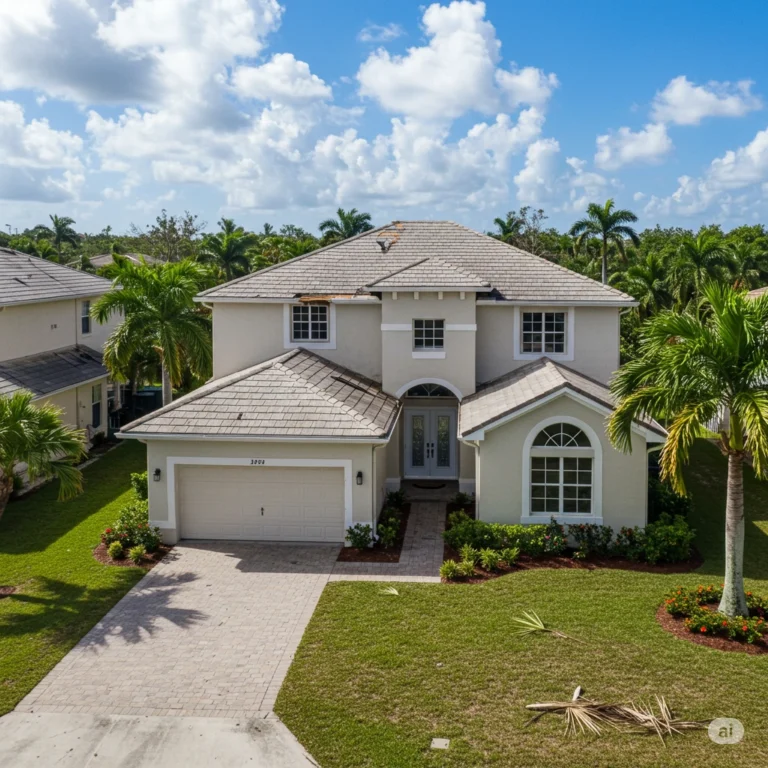
How useful was this post?
Click on a star to rate it!
Average rating 5 / 5. Vote count: 3
No votes so far! Be the first to rate this post.
